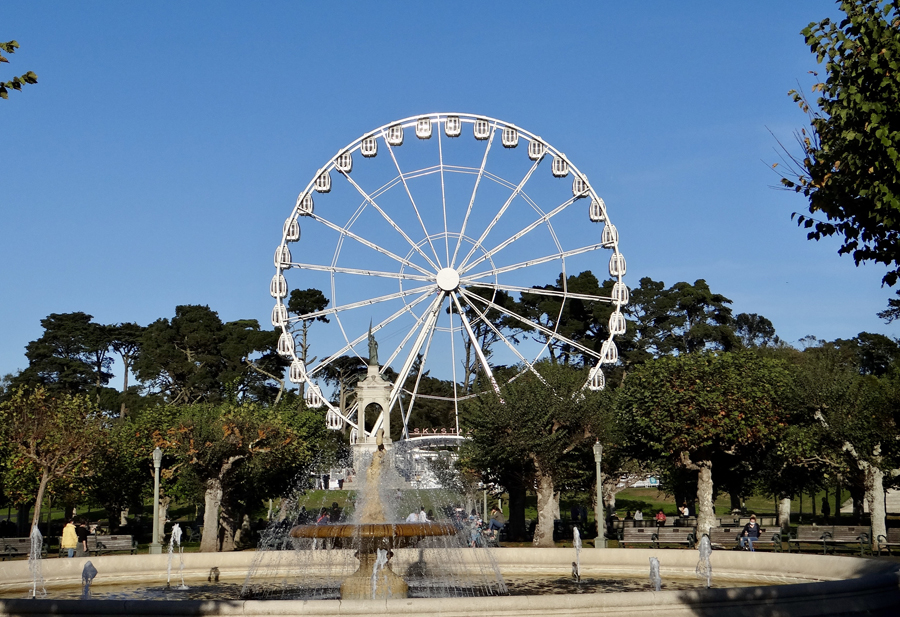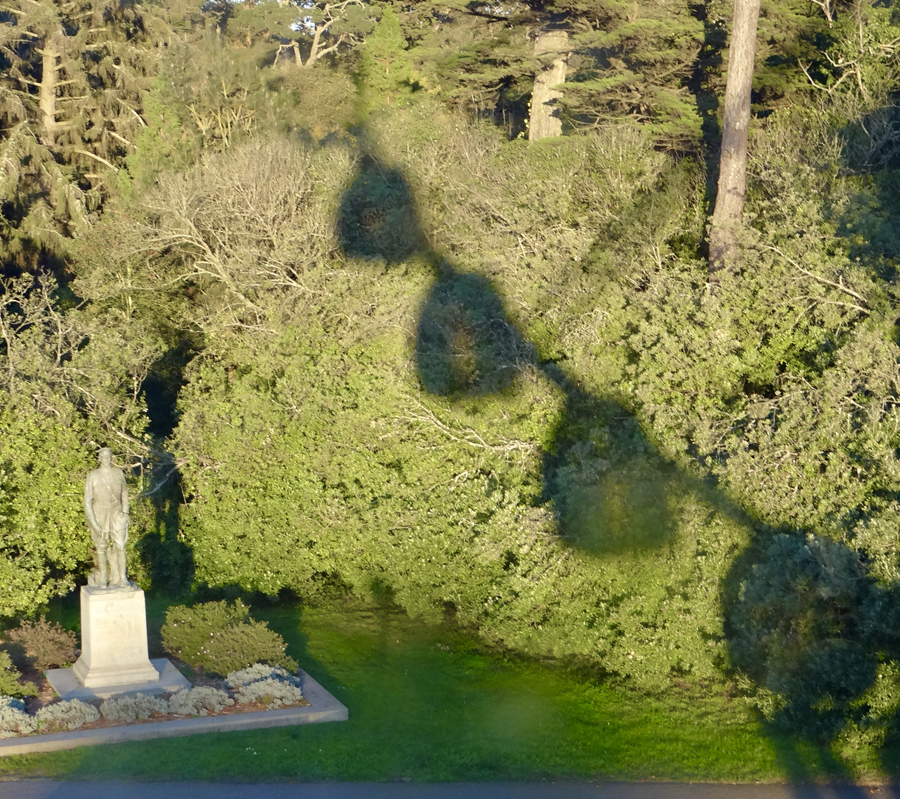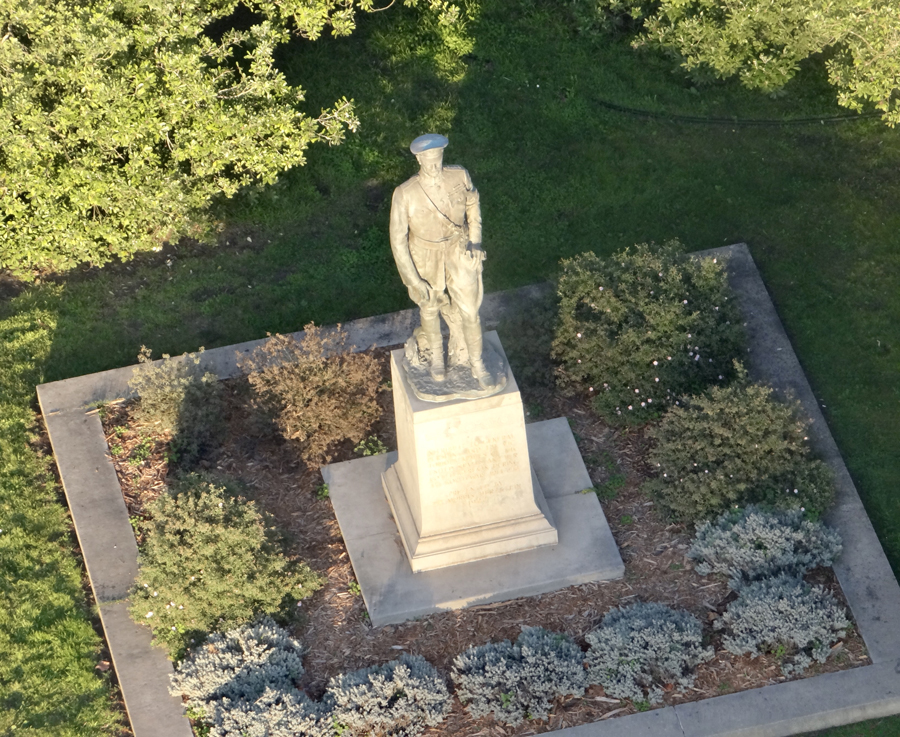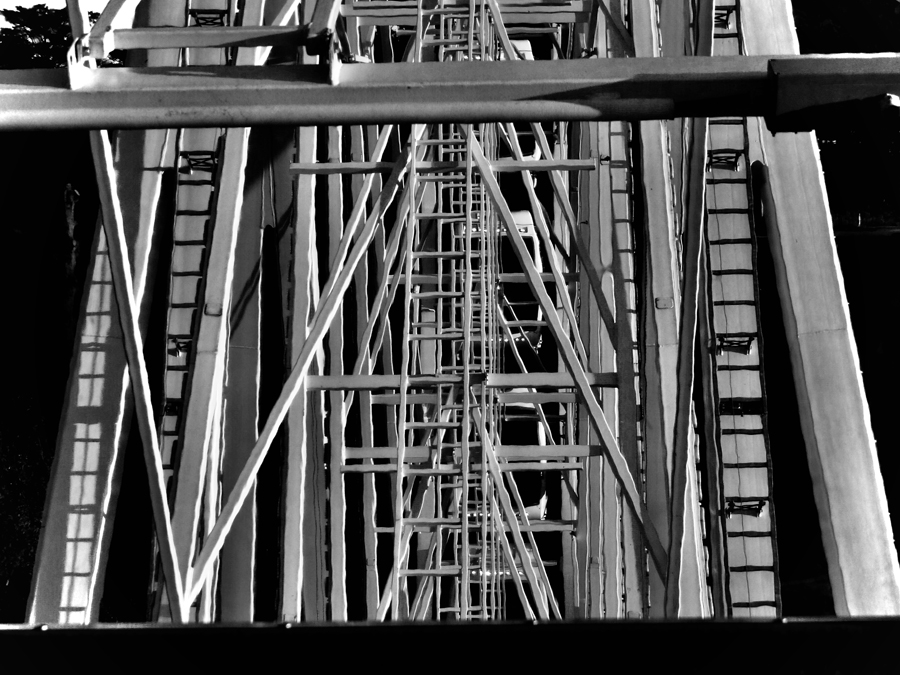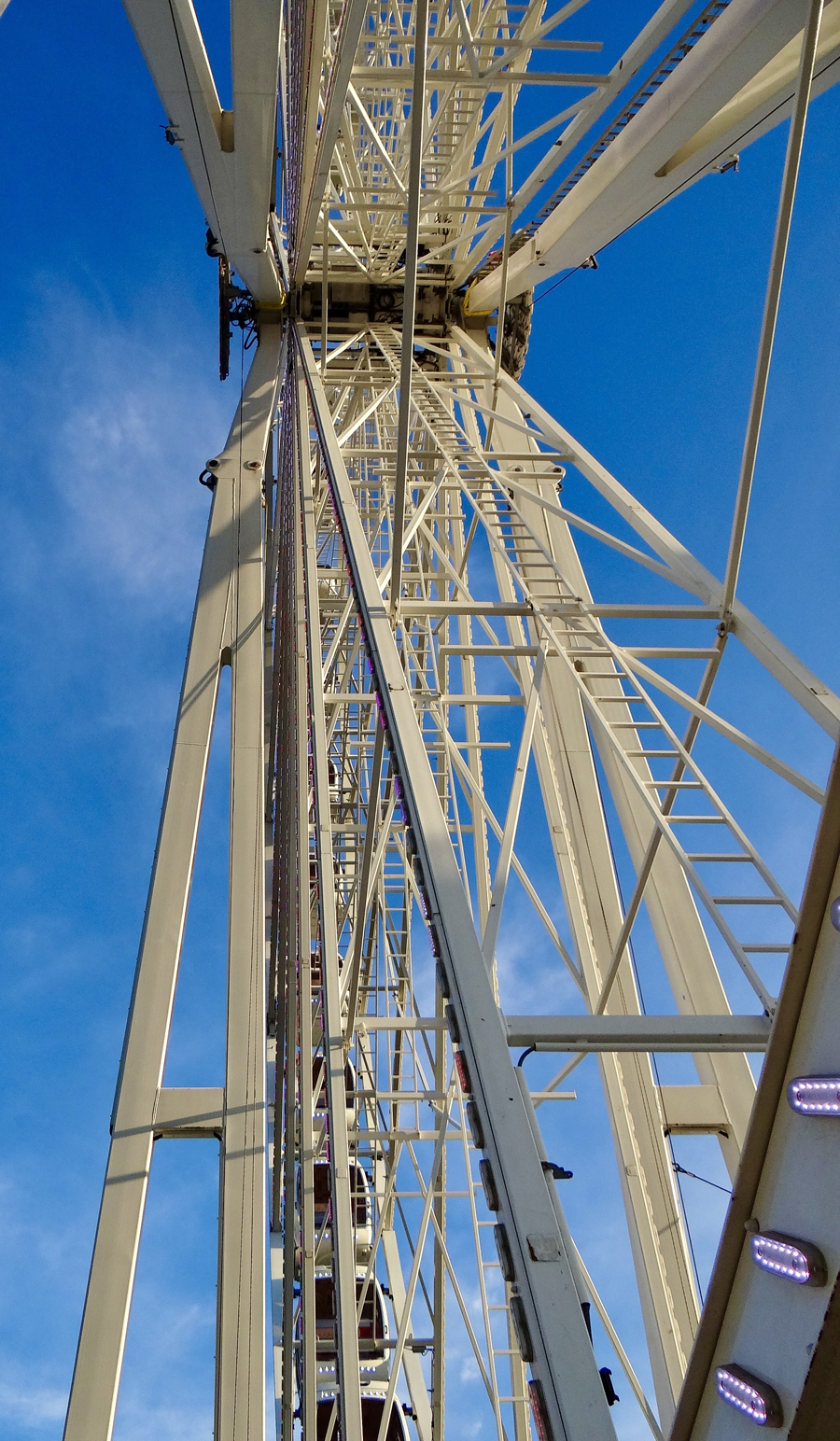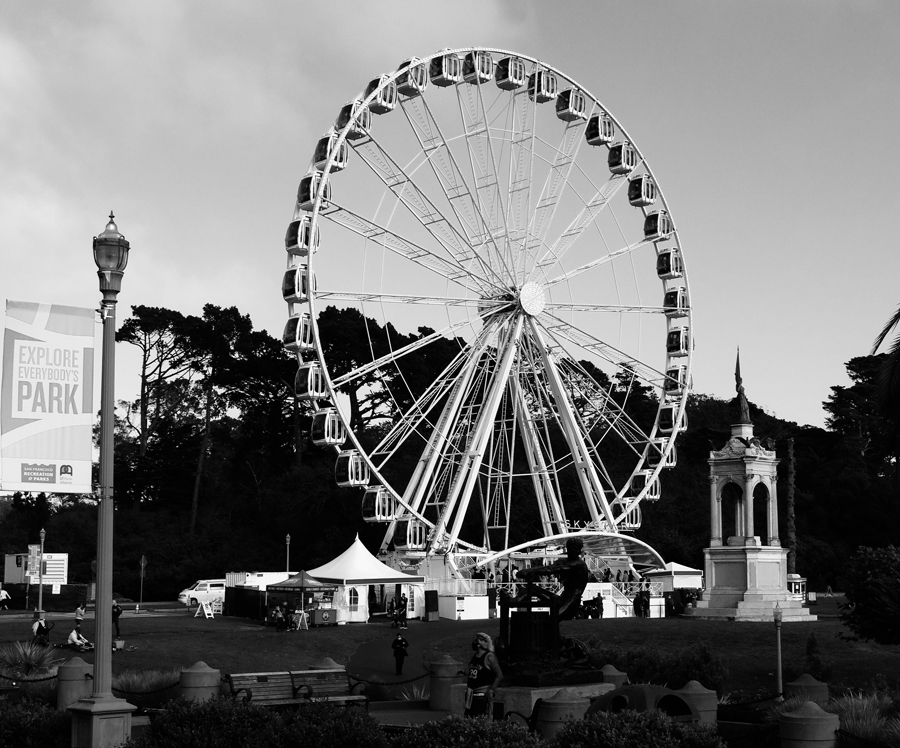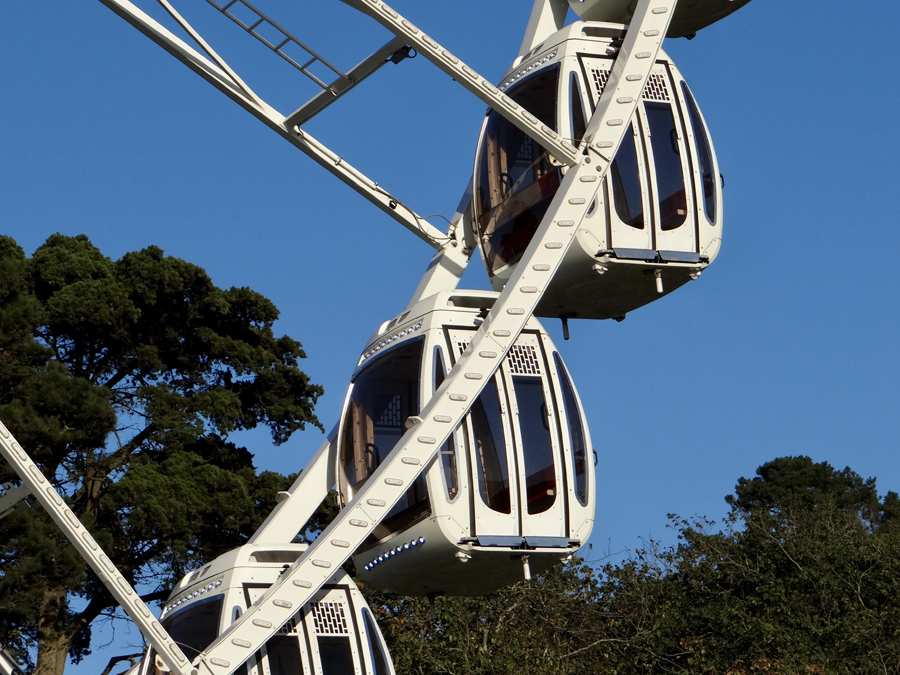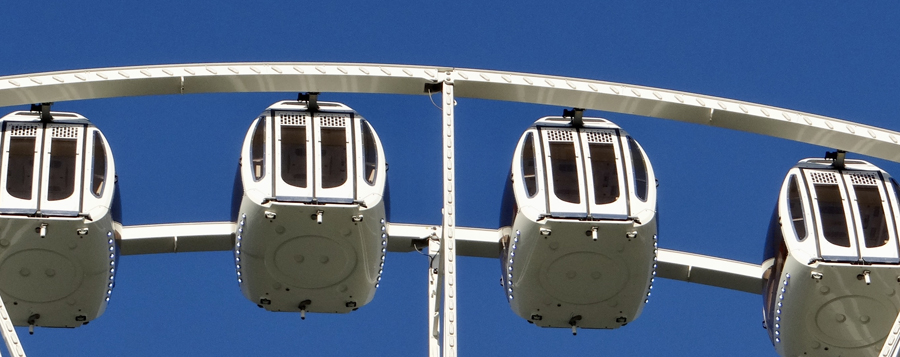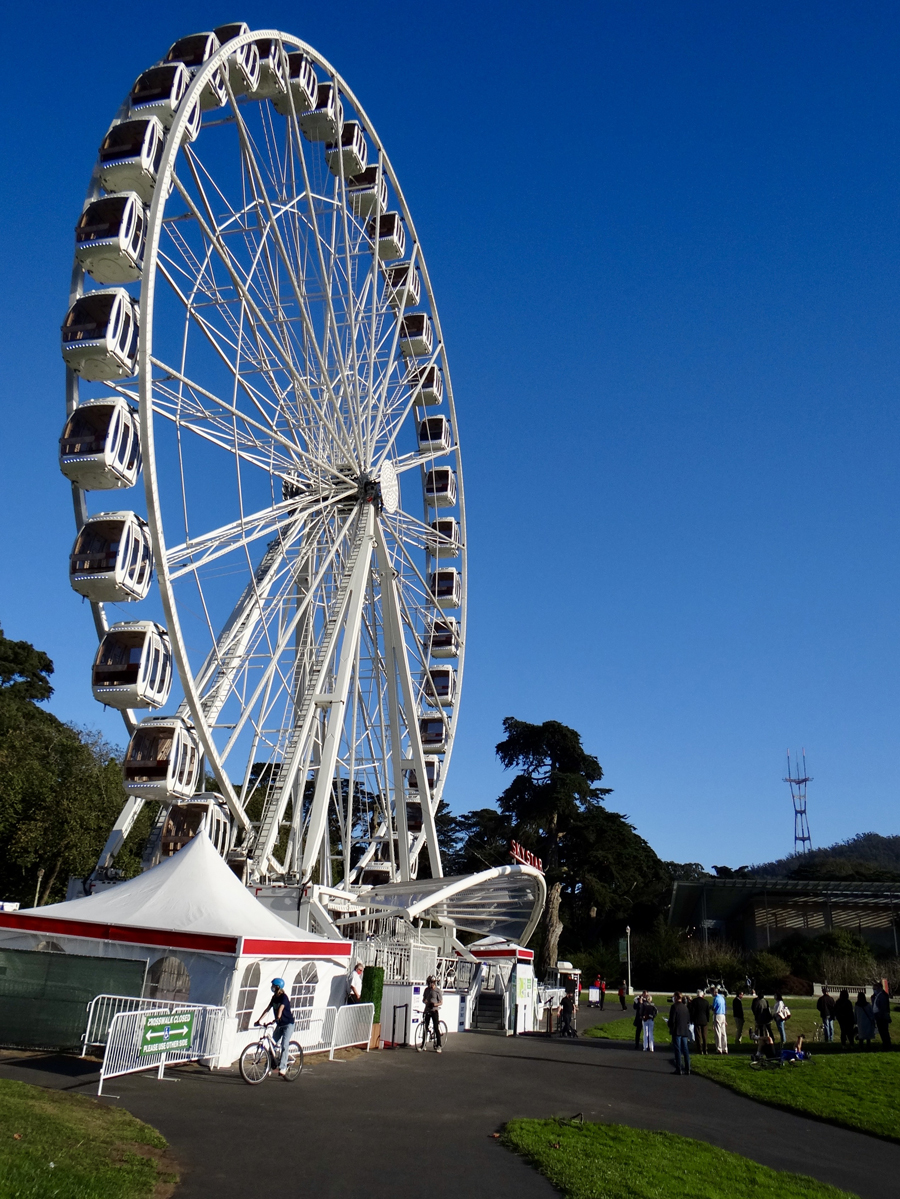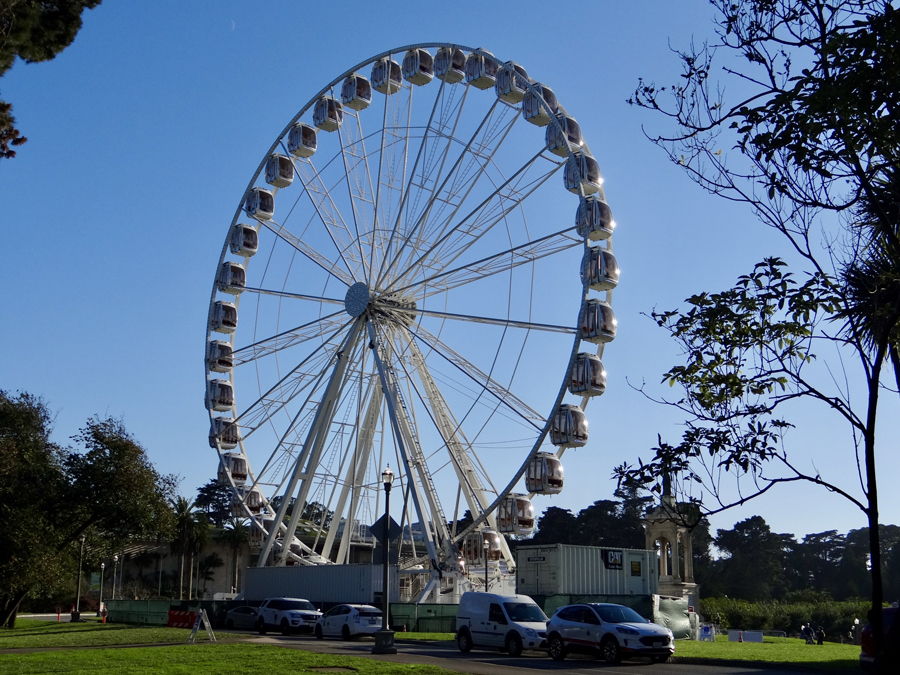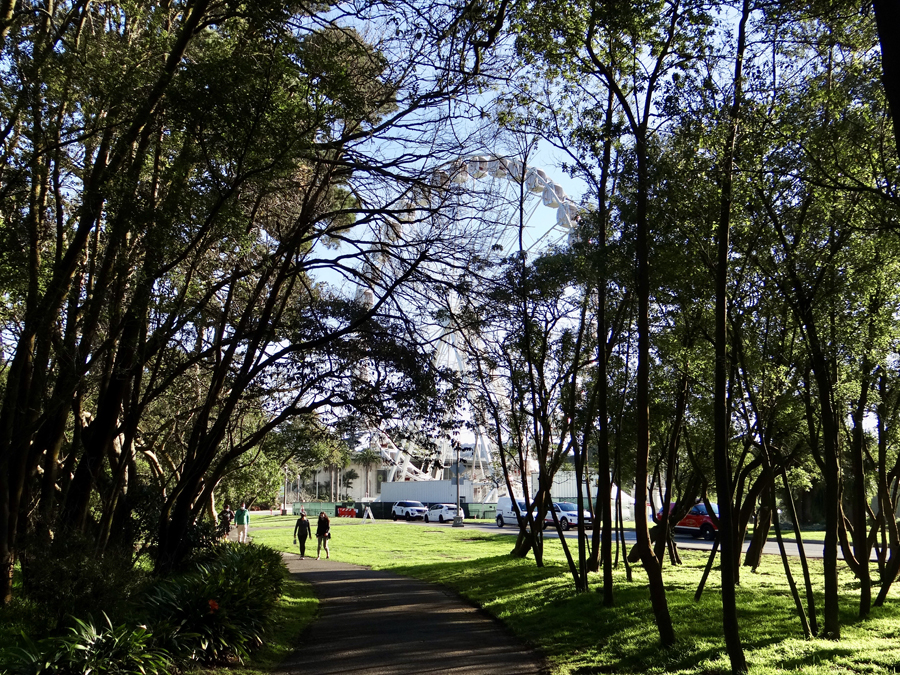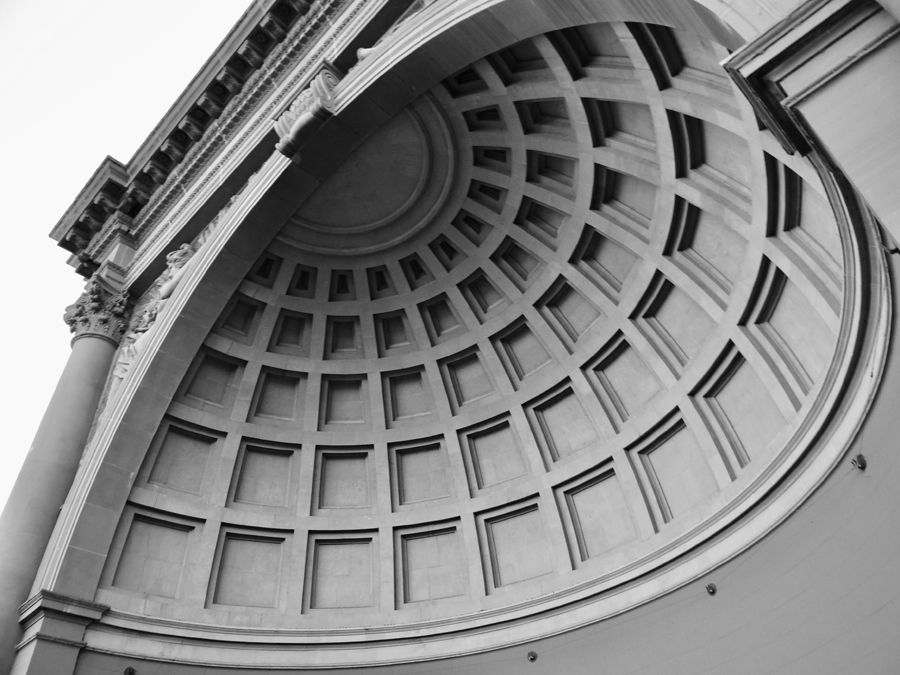By Emily Huston
Thousands of people visit the Music Concourse in Golden Gate Park each week to enjoy the revamped museums, ride the newly installed Observation Wheel, catch a sunset light show at the renovated Spreckels Temple of Music Bandshell or take a quiet walk in the Japanese Tea Garden or Botanical Garden.
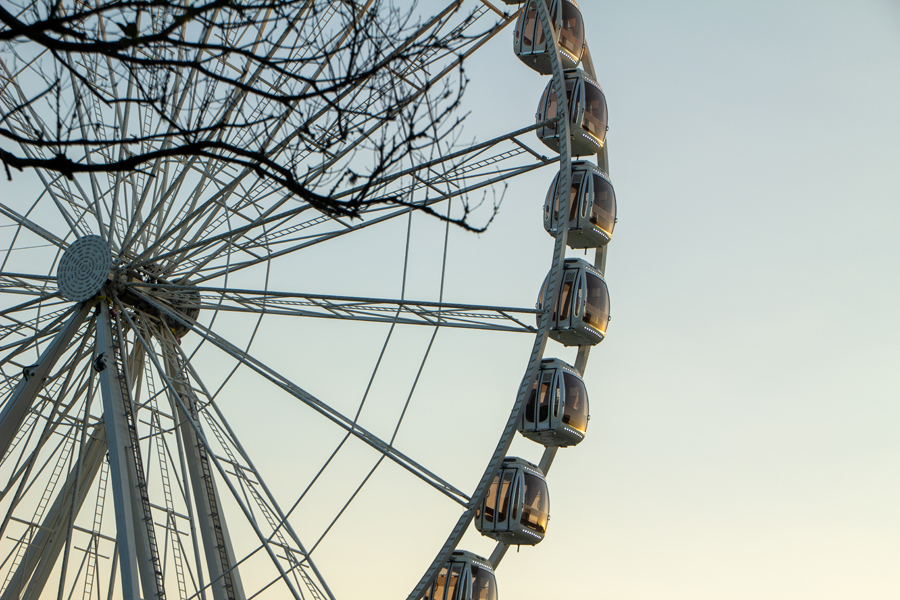
Observation Wheel in Golden Gate Park. Photo by Emily Huston.
But it has been a start-and-stop year. After the elation of having the attractions open again, they recently needed to close again due to the rising number of COVID-19 cases in the City.
The outdoor gardens were the first locations to reopen over the summer since the onset of the shelter-in-place order to fight the spread of the COVID-19 took effect, but the Music Concourse’s indoor cultural offerings required a longer wait.
On Sept. 22, the de Young Museum reopened its doors to the public, but recently had to shut them again, according to a press release.
“The museum will again close temporarily due to San Francisco’s assignment to California’s purple tier. The closures will be effective at 8 p.m. on Saturday, Nov. 28, in accordance with the recent mandate from the City and County of San Francisco.” the release stated.
The California Academy of Sciences, the Observation Wheel and the Bandshell reopened in late October.
On Nov. 28, the SkyStar Observation Wheel posted the news on its Facebook page that it, too was closing.
“We’ve temporarily suspended operations of the SkyStar Wheel effective Sunday, Nov. 29 after health officials announced San Francisco entered the state’s purple tier due to a surge of Covid-19 cases,” the post read.
“All SkyStar Wheel ticket holders with reservations beginning Sunday, Nov. 29 can reschedule their rides by visiting www.skystarwheel.com.”
The staff at the museums were excited to invite visitors back within their walls.
“We were really longing to welcome back our guests,” said Ike Kwon, chief operating officer and head of government affairs at the California Academy of Sciences.
Susan McConkey, chief administrative officer for the de Young, said there was a lot of emotion connected with the museum’s re-opening.
“People were walking in and bursting into tears, they were so happy to be here,” McConkey said. “They’ve been cooped up at home for so long. We really did have people very emotional about being back in a space and feeding their soul with some art.”
There is currently no estimate of when the de Young Museum or the Observation Wheel can reopen.
Since their closures in early March, both the de Young and the Academy have drawn upon local, state, and CDC public health guidelines to re-imagine the visitor experience in light of the spread of the COVID-19. On top of the usual face covering and social distancing mandates, the de Young and the Academy sell advance timed-entry tickets to ensure total occupancy does not exceed 20%. Representatives from both museums noted that their limit is below the 25% maximum capacity required by the City.
“The whole time we’ve been erring on the side of caution,” McConkey said. She adding that visitors were exceptionally courteous in following the new rules.
Kwon agreed. He said the majority of their nearly 2,000 daily guests – mostly Bay Area residents – have been terrific at following the safety precautions. After nearly a month of being open, only one scofflaw group of visitors was asked to leave.
“They kept taking [their masks] off, and after the third time we had to invite them not to stay any longer, as we like to put it,” Kwon explained. “We refunded their money of course, but after the third time of them removing their masks, we decided it became a safety issue for our staff and for our guests.”
The Academy drew upon the expertise of their chief of science and infectious diseases expert, Shannon Bennett, to guide their reopening protocol. To keep staff as well as guests safe, the Academy updated their heating, ventilation and air conditioning (HVAC) system for better airflow, installed hand sanitizer at interactive exhibits, adopted stringent museum-wide cleaning schedules, and decided to allow only outdoor cafe dining.
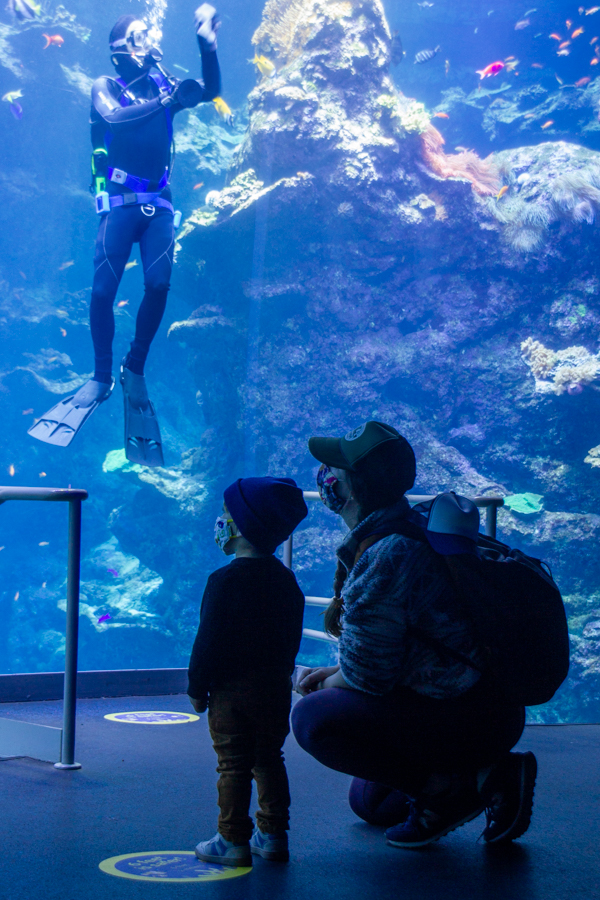
Photo by Emily Huston.
.
Extremely high-touch exhibits, like the indoor children’s exploration space Curiosity Grove, remain closed for the foreseeable future.
“You can’t stop a one-year old from putting something in their mouth,” Kwon noted.
Since most fine arts exhibits are in large open-air rooms that don’t require touching, the de Young required less of an overhaul than the Academy to reopen.
“Apart from taking a couple of interactive devices out of the mix, our exhibitions didn’t need changes,” McConkey said. “In fact, the Frida Kahlo exhibit was already installed and hung right before shelter-in-place. So, it was all ready to go when we had it closed up over the summer before we were ready to reopen.”
Nevertheless, both museums’ long-planned reopening efforts will be put on hold since the number of COVID-19 cases in the City continued to climb.
The City’s director of health, Dr. Grant Colfax, predicted that the City and County of San Francisco was expected to fall into the state’s purple tier, which ultimately did force all museums to close. Purple tier status denotes that the virus is widespread, with more than seven cases per 100,000 residents every day. That come out to slightly more than 60 new cases per day in San Francisco.
Before the museum needed to close again, McConkey acknowledged that case levels were “going in the wrong direction, generally.” She also stressed the importance of the de Young providing steady employment for their staff, most of whom were furloughed from March through September.
Even as the number of COVID-19 cases rise and fall, Golden Gate Park remains more popular than ever. Tamara Aparton, spokesperson for the SF Recreation and Park Department, noted that since the shelter-in-place order went into effect in March, they have recorded a 200% increase in people who bike and a 600% increase in people who walk within Golden Gate Park.
“It’s not the first time that Golden Gate Park has been a refuge for people during a difficult time,” Aparton said. She mentioned the park’s use as a refugee camp after the 1906 earthquake and as a space for Vietnam War protests in the 1960s. “It’s been there for San Francisco through all kinds of times and this is one of those periods in history where people really appreciate their park and really need it.”
To help facilitate safely distanced travel throughout the park, in March Rec. and Park closed the lower half of John F. Kennedy Drive and the entire Music Concourse loop to vehicular traffic. Five months later, that same car-free route was expanded to encompass Golden Gate Park’s first Slow Street. The newly protected route connected with the Music Concourse to offer residents who get around without a car a safe network from the eastern edge of the park all the way to Ocean Beach.
When the de Young and Academy reopened in September and October, the Music Concourse loop also reopened to car drop-offs via Martin Luther King Jr. Drive. Inner Richmond resident Alec Hawley enjoyed the opportunity to bike, rollerblade, or scooter through the previously car-free Music Concourse area with his family but said he has avoided the area since Rec. and Park reopened the loop to private vehicle and taxi traffic.
“Before the museums opened back up and traffic was a bit calmer, we biked through and around and into the plaza,” he wrote via Twitter message. “I have two kids in their first year of riding bikes independently and being in even slow traffic is hairy. We’ve already been doored and almost run over.”
Observation Wheel
The newest attraction added to the eastern end of the Music Concourse, the 150-foot-tall Observation Wheel, also experienced the start-stop-start-stop cycle of the COVID-19 mandates.
Aparton said it was originally erected as the centerpiece for Golden Gate Park’s 150th anniversary kick-off. Since March, the Wheel seemed frozen in time like a half-built ghost ride, doomed by the City’s shelter-in-place order before construction could even finish.
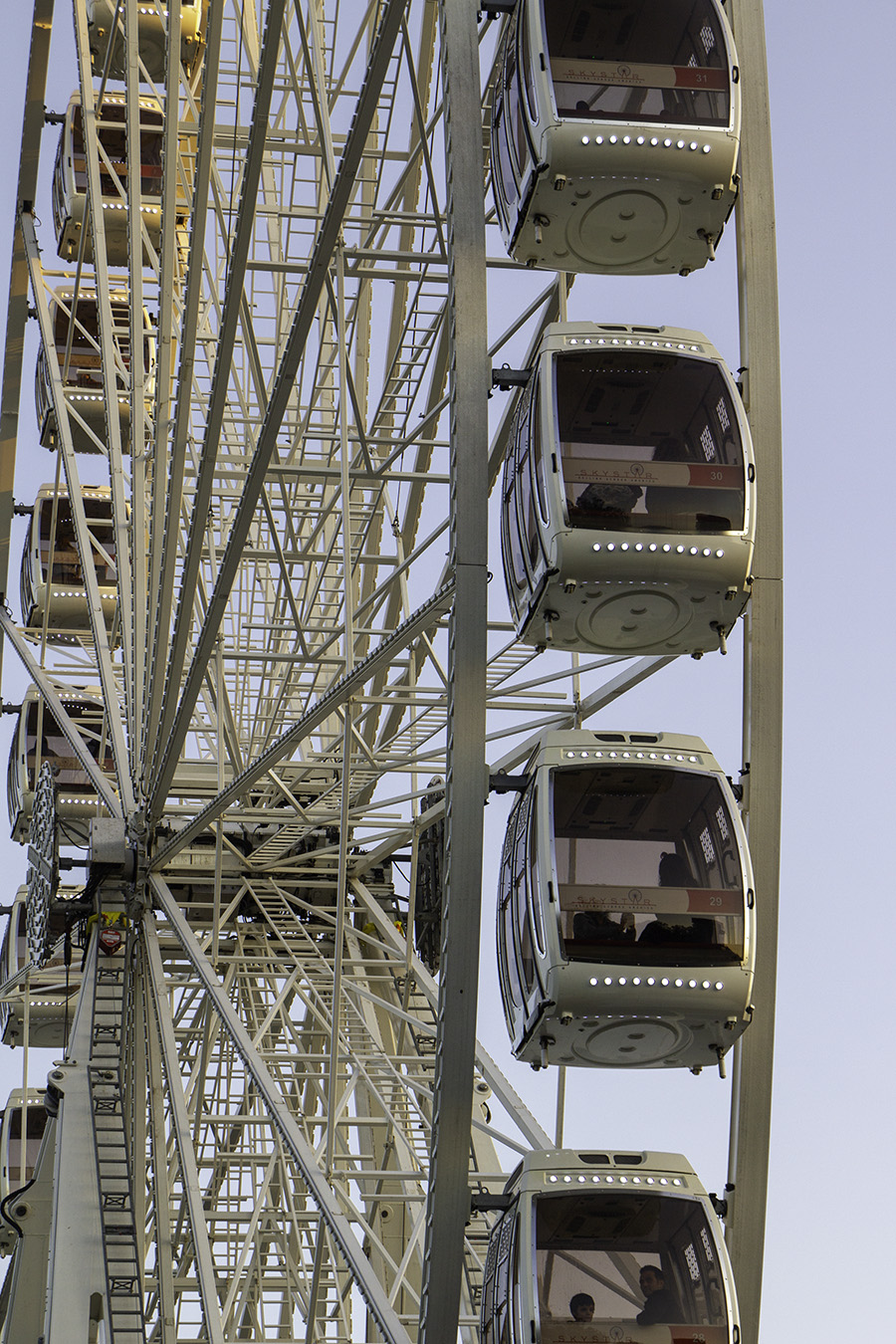 Photo by Emily Huston.
Photo by Emily Huston.
Six months later, a ribbon-cutting with Mayor London Breed and Rec. and Park General Manager Phil Ginsburg ushered in the behemoth monument’s public unveiling.
“We’ve had to adapt many of our community events and celebrations this year, but the fact that we can now safely open the Observation Wheel is a tribute to the resilience of our city and provides much-needed hope for residents,” Breed said at the October event.
To ensure a safe opening, SkyStar (the Observation Wheel’s operator) worked with Rec. and Park to develop visitor safety precautions such as requiring advanced prepaid tickets, allowing one household per gondola, and having staff sanitize each of the 36 gondolas after use.
This is the first time an observation wheel of this scale has operated in San Francisco since Golden Gate Park hosted the Midwinter International Exposition of 1894, where the Firth Wheel was a major attraction, standing at 120 feet tall. The current Observation Wheel is approximately 150 feet tall.
A new light show at the Spreckels Bandshell, held every sundown in the shadow of the Observation Wheel’s one million LED lights, also serves to commemorate Golden Gate Park’s official 150th anniversary. Although the coronavirus shutdowns moved the milestone online in a way no one could have predicted, the Music Concourse plaza has bounced back and provided a collective space for San Franciscans to breathe safely.
“I think to a lot of people during the pandemic it’s become clear that parks are not a ‘nice to have’ thing, they’re a must-have thing,” Aparton said. “Especially when you live in a city and might not have a yard, parks are really a place to get your mental and physical health together and feel human again.”
Photos by Michael Durand.
Categories: Golden Gate Park

